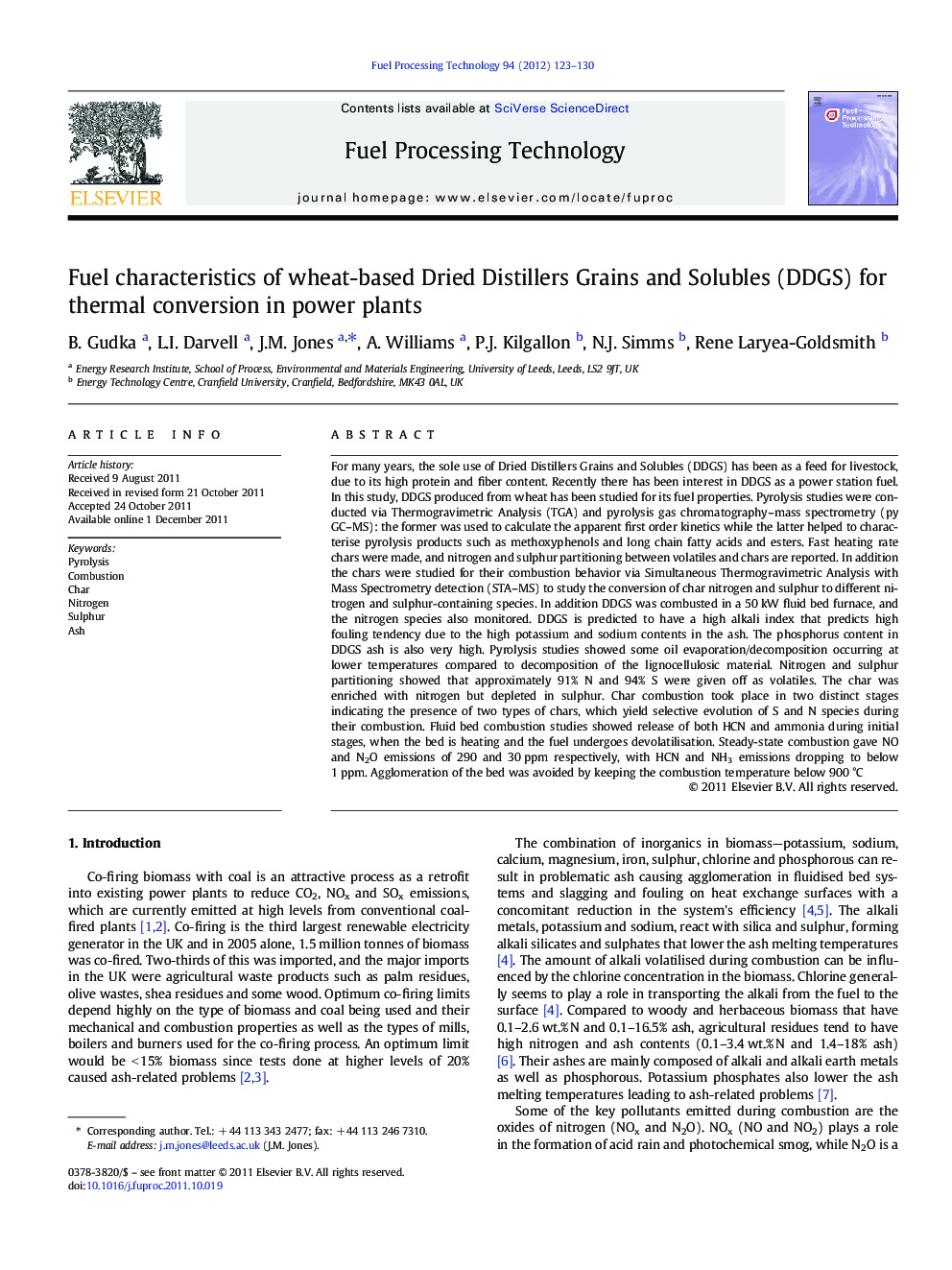| کد مقاله | کد نشریه | سال انتشار | مقاله انگلیسی | نسخه تمام متن |
|---|---|---|---|---|
| 210502 | 461714 | 2012 | 8 صفحه PDF | دانلود رایگان |

For many years, the sole use of Dried Distillers Grains and Solubles (DDGS) has been as a feed for livestock, due to its high protein and fiber content. Recently there has been interest in DDGS as a power station fuel. In this study, DDGS produced from wheat has been studied for its fuel properties. Pyrolysis studies were conducted via Thermogravimetric Analysis (TGA) and pyrolysis gas chromatography–mass spectrometry (py GC–MS): the former was used to calculate the apparent first order kinetics while the latter helped to characterise pyrolysis products such as methoxyphenols and long chain fatty acids and esters. Fast heating rate chars were made, and nitrogen and sulphur partitioning between volatiles and chars are reported. In addition the chars were studied for their combustion behavior via Simultaneous Thermogravimetric Analysis with Mass Spectrometry detection (STA–MS) to study the conversion of char nitrogen and sulphur to different nitrogen and sulphur-containing species. In addition DDGS was combusted in a 50 kW fluid bed furnace, and the nitrogen species also monitored. DDGS is predicted to have a high alkali index that predicts high fouling tendency due to the high potassium and sodium contents in the ash. The phosphorus content in DDGS ash is also very high. Pyrolysis studies showed some oil evaporation/decomposition occurring at lower temperatures compared to decomposition of the lignocellulosic material. Nitrogen and sulphur partitioning showed that approximately 91% N and 94% S were given off as volatiles. The char was enriched with nitrogen but depleted in sulphur. Char combustion took place in two distinct stages indicating the presence of two types of chars, which yield selective evolution of S and N species during their combustion. Fluid bed combustion studies showed release of both HCN and ammonia during initial stages, when the bed is heating and the fuel undergoes devolatilisation. Steady-state combustion gave NO and N2O emissions of 290 and 30 ppm respectively, with HCN and NH3 emissions dropping to below 1 ppm. Agglomeration of the bed was avoided by keeping the combustion temperature below 900 °C
► We investigate Dried Distillers Grains and Solubles (DDGS) as a fuel and examined N, S and ash properties, and pyrolysis and combustion behaviour.
► Combustion temperature should be below 900 °C to prevent melting and agglomeration.
► 91% N and 94% S evolved in volatiles.
► HCN and NH3 released in volatiles.
► Char enriched in nitrogen but depleted in sulphur.
Journal: Fuel Processing Technology - Volume 94, Issue 1, February 2012, Pages 123–130